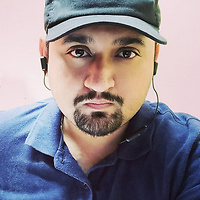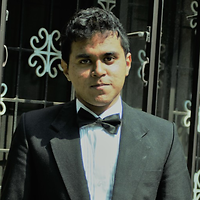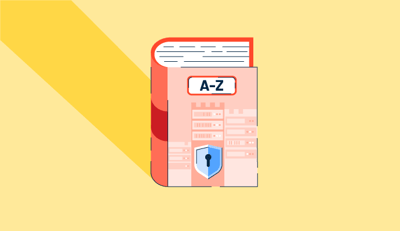July 9, 2025
 by Washija Kazim / July 9, 2025
by Washija Kazim / July 9, 2025
%20(1).png?width=690&name=G2CM_FI940_Learn_Article_Images_%5Bai_image_generation%5D_V1b%20(1)%20(1).png)
Many teams push Mask R-CNN into production too early, only to watch it break under real-world conditions. Slow inference, missed detections, and unpredictable costs are all symptoms of the same problem: treating a proof-of-concept like it’s ready for scale.
In industries like autonomous driving, medical imaging, and security, these failures aren’t just inconvenient — they can lead to financial losses, compliance violations, or safety incidents. Accuracy isn’t optional; it’s the baseline.
Mask R-CNN has gained traction because it combines pixel-level segmentation with robust object detection. Built on top of convolutional neural networks (CNNs), a type of artificial neural network, the architecture is flexible and powerful. Its ability to detect and segment multiple objects precisely makes it critical for computer vision applications at scale, from automated quality control to asset tracking and surveillance. But success in production environments is far from guaranteed.
Mask R-CNN matters for enterprise projects because it enables accurate object detection and instance segmentation in real time. It supports tasks like automated quality control, asset tracking, and surveillance. Its ability to detect and segment multiple objects precisely makes it critical for computer vision applications at scale.
Enterprise teams quickly discover that the difference between a working prototype and a reliable production system often comes down to three things: how data is handled, how configurations are tuned, and how outcomes are evaluated.
This guide is written for technical leads, ML engineers, and decision-makers who need to decide whether Mask R-CNN is the right fit for their stack and how to implement it correctly. You’ll learn what the architecture offers, how to build a production-ready model, which metrics matter most before deployment, and how to maintain reliability in live environments.
Building upon the foundations laid by its predecessors, Mask R-CNN introduces a novel architecture that identifies objects and delineates their boundaries with remarkable precision. Before we discuss Mask R-CNN’s architecture, let’s examine the history of the R-CNN model architecture and its evolution over the years.
Ross Girshick, Jeff Donahue, Trevor Darrell, and Jitendra Malik are well-known for developing the R-CNN approach to object detection in 2014. The R-CNN architecture consists of three major steps, including:
R-CNN’s method of generating region proposals and using CNNs enabled precise localization and object identification within images. Still, with slow inference times and high complexities, further improvements were needed to make R-CNN more suitable for real-time applications.
Girshick proposed an enhanced version called Fast R-CNN to address R-CNN's speed challenges. This version introduced the Region of Interest (RoI) pooling layer, allowing the model to extract features from the entire image in one pass to improve processing speed.
Then, building upon Fast R-CNN, Shaoqing Ren, Kaiming He, Ross Girshick, and Jian Sun introduced Faster R-CNN in 2015 and introduced the Region Proposal Network (RPN) concept.
Here’s how it works:
Finally, Kaiming He et al. presented Mask R-CNN in 2017 to perform instance segmentation alongside object detection. Mask R-CNN does this by incorporating a Mask Head into the Faster R-CNN architecture and allowing for the generation of pixel-level segmentation masks for objects.
Mask R-CNN builds upon the architecture of Faster R-CNN, introducing several vital components that enable instance segmentation. Below is an outline of the concepts to understand.
Mask R-CNN operates through a systematic structure as follows:
The process begins with the input image. Models may have different requirements for the input image, so additional steps may need to occur before passing the image through the backbone network to ensure the best results.
The image then passes through the backbone network, extracting image features to produce a feature map and capturing an array of information and details.
The RPN proposes region proposals or bounding boxes of various sizes and aspect ratios. The boxes can be considered anchor points that serve as bounding boxes around objects in the image. The RPN also assigns a score to each proposal to show the likelihood that an object is present. Here’s a visual representation of what the RPN does:
Source: GitHub
Once the RPN generates region proposals, the RoI Align layer gets introduced. This layer aligns features within each Region of Interest (RoI) with the grid of the feature map. The RoI Align layer step helps ensure extracted features retain precision for more accurate predictions.
With the features extracted for each RoI, the model classifies objects accordingly. Objects such as a person, car, or animal are assigned a classification label. At the same time, the bounding box regression adjusts bounding boxes to align with the objects in the image for accuracy.
The model processes the features from the RoI Align layer and outputs masks at the pixel level. The mask branch predicts whether each pixel belongs to an object or the image background to delineate boundaries between objects.
Finally, Mask R-CNN outputs a class label, bounding box, and segmentation mask for each detected object. The final result of the image shown above ends up looking similar to this:
Source: GitHub
Most organizations fail with Mask R-CNN before the model ever reaches production, not because the architecture is flawed, but because they underestimate how critical the early setup phase is. Building a working model is not a single training run. It is a deliberate series of steps involving data curation, model configuration, and inference validation.
A Mask R-CNN model is only as good as the masks it sees during training. Teams that succeed begin with an exacting approach to dataset preparation:
Poor-quality masks are one of the fastest ways to derail a project. Teams that skip these steps often find themselves retraining weeks later.
Once the dataset is ready, the next challenge is configuring the architecture. While it is tempting to use default settings, enterprises working with high-stakes applications — such as medical imaging or autonomous driving — often tune these parameters carefully:
Mask R-CNN is computationally intensive, so failed training runs are costly. Common pitfalls include:
| Pitfall | Why it happens | What to do about tit |
| Missing small or overlapping objects | Low mask resolution or poor annotation coverage | Increase mask head resolution, add zoom-in crops, and enforce QA on overlapping masks |
| Class imbalance | Overrepresentation of one or two classes | Collect additional minority-class images, and use class-weighted loss functions |
| Fragmented or incomplete masks | Inconsistent or poor-quality annotations | Run automated QA, retrain annotators, and use polygon simplification tools |
| Overfitting during early training | Small dataset or overly simple augmentations | Add richer augmentations and ensure robust validation splits |
| Inference is too slow on the target hardware | Backbone is too heavy or batch sizes are too small | Switch to a lighter backbone, apply mixed precision, and explore TensorRT optimizations |
The most successful teams treat the first cycle as a diagnostic run rather than a final model. They monitor both the box Average Precision (AP) and the mask AP at various IoU thresholds to understand where the model is failing.
Mask R-CNN can perform well on paper yet fail dramatically in production if the right metrics are not tracked. Enterprises that deploy the model successfully use a structured evaluation framework that goes beyond a single Average Precision (AP) score. They ask a series of questions designed to uncover weak spots before the model is allowed anywhere near production data.
Box AP or mask AP alone rarely tells the full story. Enterprises with mission-critical use cases break metrics down by dimension:
A well-designed test set can expose failure modes before they become incidents in production. Leading organizations follow a few principles:
Without clear thresholds, teams risk pushing underperforming models into production. Successful organizations establish specific go/no-go criteria:
| Metric | What it reveals | Typical acceptance threshold (example ranges) |
| AP@[.50:.95] | Overall localization and mask quality across IoU thresholds | ≥0.60 combined; ≥0.80 for critical classes |
| AP by object size (APs/APm/APl) | Ability to detect small, medium, and large objects | Within ±10% across size groups; no severe underperformance |
| False negatives | Missed detections | ≤2% for high-impact classes |
| False positives | Spurious detections | ≤5% for critical classes |
| Latency per image | Real-time feasibility on target hardware | ≤70ms per frame for real-time applications |
| Throughput (FPS) | Pipeline efficiency | ≥30 FPS (video) or batch throughput meets processing needs |
| Memory footprint | Stability under load | Must remain below 80% of available memory on the target hardware |
Training a strong Mask R-CNN model is only half the battle. Enterprises that succeed at scale treat deployment and maintenance as a discipline of its own. They make deliberate choices about infrastructure, cost, and reliability to ensure models perform consistently once they leave the lab.
| Deployment environment | Pros | Cons | Best use case |
| Cloud GPU servers | Scales easily; can parallelize inference across GPUs; flexible cost model | Ongoing compute cost, potential network latency | Batch processing of large datasets (e.g., aerial imagery, medical scans) |
| On-premises clusters | Data stays in secure facilities, and predictable performance | Requires dedicated hardware; capacity must be planned in advance | Regulated industries (healthcare, defense) |
| Edge devices | Minimal latency; no dependency on network; lower bandwidth costs | Requires model compression (quantization/pruning); limited hardware | Real-time scenarios (autonomous vehicles, robotics, security cameras) |
Organizations apply two sets of controls:
These practices routinely bring inference times from 120ms per image to below the 70ms threshold required for real-time applications.
Models degrade over time as input data shifts. Successful teams:
While robust for object detection and instance segmentation, it’s essential to consider whether Mask R-CNN fits your project. Consider the following when evaluating Mask R-CNN:
Most deep learning models require significant amounts of high-quality data for effective training, and Mask R-CNN is no exception. A large, balanced, and unbiased dataset is needed to help the model learn how to detect and segment objects for future processing. If the dataset is too small, imbalanced, or poorly represents real scenarios, the model may not perform well and recognize desired objects accurately.
Besides the training dataset, the overall training process can be time-consuming and resource-intensive, requiring computational power and human resources to train the model.
Since the Mask R-CNN model requires many components for its computations, including the backbone network, RPN, bounding box regression, and mask prediction, significant resources are required to process the input image. Computational complexity can slow inference times, making Mask R-CNN a less desirable option for applications and devices with limited computational power.
Mask R-CNN doesn’t work perfectly in every scenario, especially if the model isn’t trained to handle the data properly. For example, in a scene with overlapping or closely packed objects, the accuracy of the bounding box and mask predictions can diminish, leading to poor results. While not necessarily severe in all cases, this is problematic in applications where precise instance segmentation is critical, such as self-driving vehicles navigating busy roadways.
In addition, scenes containing objects of varying sizes or shapes (unusual shapes compared to the rest in the image) can pose challenges for Mask R-CNN. Drastic variations in object dimensions can lead to poor localization or missed detections overall.
Mask R-CNN is making waves in object detection. Below are some of its everyday use cases and applications across sectors today.
In healthcare and medical imaging, detection accuracy can make or break the outcomes of a patient’s treatment and ongoing medical plan. Academic studies have shown that using Mask R-CNN models for medical image segmentation can improve accuracy and performance. A 2021 study found that training the segmentation model with purified medical images could improve performance by an average of 16%.
In another study by Ming Him Foun, an enhanced Mask R-CNN method was used for high-precision brain tumor instance segmentation. The model yielded improvements in precision, recall, and mean Average Precision (mAP) by 0.67%, 0.79%, and 1.88%, respectively.
Precision and accuracy are critical to the safety and effectiveness of self-driving vehicles. Mask R-CNN supports the object detection and instance segmentation level needed to support autonomous operations. A 2023 study presented an approach to lane detection that leveraged Mask R-CNN. As a result of their experiments, the authors found that their approach yielded high precision and recall rates, even in complex traffic situations.
Another study revealed improvements to a Mask R-CNN model with backbone network adjustments, feature extraction capability enhancements, and bounding box regression function replacements improved detection and segmentation in autonomous driving traffic scenarios.
Another widespread use case for Mask R-CNN is object and anomaly detection in video surveillance security footage. Research found YOLOv4 and Mask R-CNN to identify human beings in surveillance video footage, with Mask R-CNN being 85% accurate over YOLOv4’s 65% accuracy.
Deploying Mask R-CNN successfully is less about downloading a repository and more about making the right decisions across data, architecture, and monitoring. The frameworks we’ve outlined—building a robust dataset, evaluating beyond AP scores, and planning for deployment trade-offs—can help teams avoid the common pitfalls that derail projects.
For enterprises evaluating Mask R-CNN against other detection and segmentation options, the next step is to run a structured pilot:
Teams that treat Mask R-CNN as part of a full MLOps pipeline rather than a stand-alone model see long-term ROI.
Learn how object detection differs from object recognition and image segmentation to understand computer vision tasks clearly.
Washija Kazim is a Sr. Content Marketing Specialist at G2 focused on creating actionable SaaS content for IT management and infrastructure needs. With a professional degree in business administration, she specializes in subjects like business logic, impact analysis, data lifecycle management, and cryptocurrency. In her spare time, she can be found buried nose-deep in a book, lost in her favorite cinematic world, or planning her next trip to the mountains.
Imagine asking Siri or Google Assistant to set a reminder for tomorrow.
 by Sagar Joshi
by Sagar Joshi
For teams building next-generation products in image and video recognition, from autonomous...
 by Sudipto Paul
by Sudipto Paul
Computer vision is the field of artificial intelligence that enables machines to "see".
 by Amal Joby
by Amal Joby
Imagine asking Siri or Google Assistant to set a reminder for tomorrow.
 by Sagar Joshi
by Sagar Joshi
For teams building next-generation products in image and video recognition, from autonomous...
 by Sudipto Paul
by Sudipto Paul


